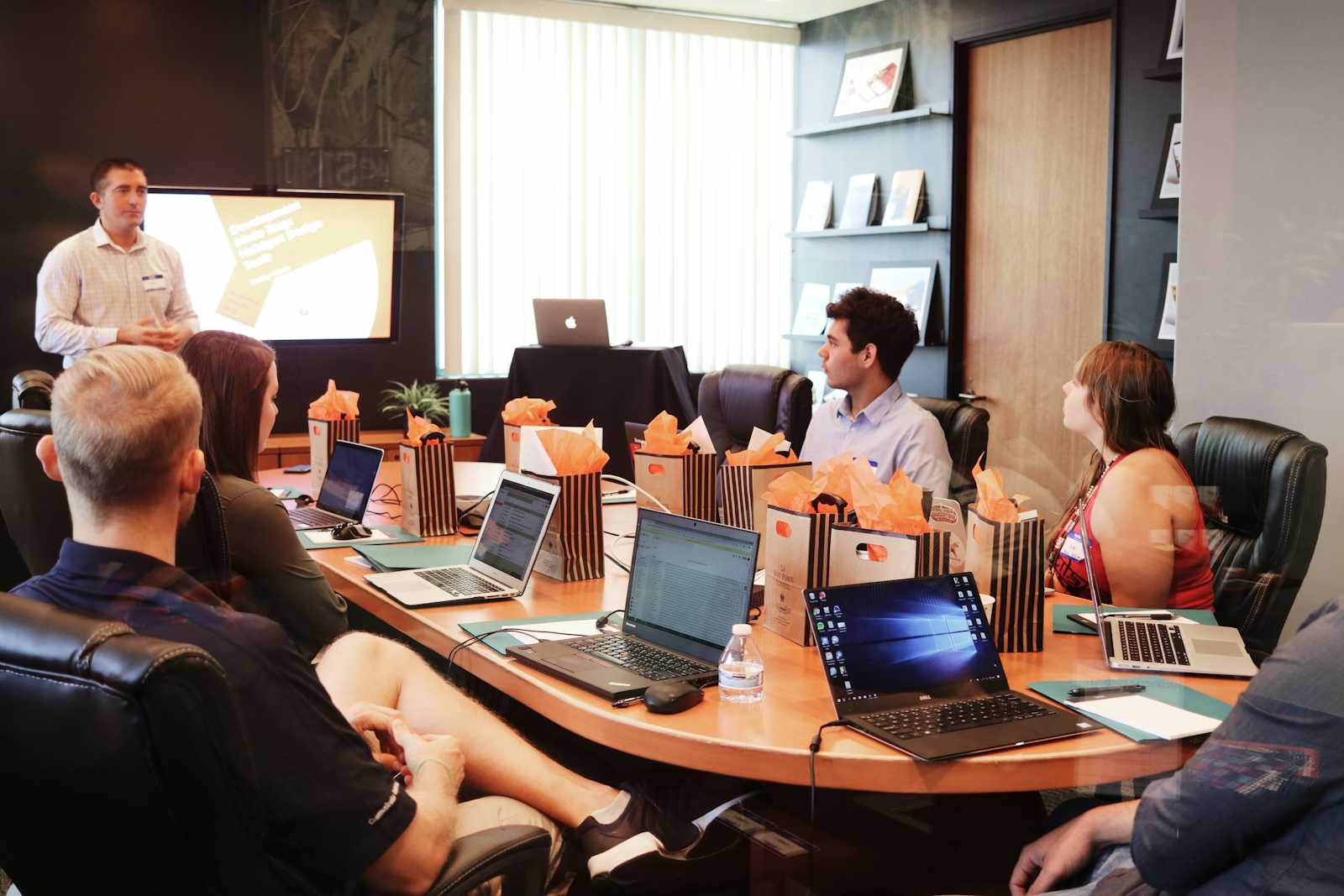Future-Proofing Your Project: How Dedicated Development Teams Adapt to Changing Technology
 Ishikha rao
Ishikha rao
In today’s ever-evolving digital age, the technological landscape is growing. With more advancements emerging every day, project development teams must navigate it by learning new skills.
Adaptability becomes a fundamentally necessary trait for bringing success. In this article, we will see some crucial concepts of future-proofing projects by hiring adaptable and scalable dedicated teams.
For staying abreast of the emerging technologies and trends employing an outsourced team is becoming a choice of majority business owners. Let’s uncover the strategies and approaches that make it necessary to hire dedicated teams and thrive in your business amidst digital evolution.
Understanding the Change
While hiring in-house teams, you might not find a professional who is equally skilled with the latest trends. Here, choosing an outsourcing model can help access global and skilled professionals in the following key technological trends:
AI & Machine Learning
AI- Artificial Intelligence refers to the concept of simulating human intelligence in machines, and allowing them to perform operations that require human intelligence like learning, problem-solving, decision-making, etc.
And ML- Machine Learning is a part of AI that mainly focuses on enabling machines to learn from information provided, without performing explicit programming. It has algorithms that improve their performance over time.
Apps using ML and AI can also use technologies like computer vision, NLP- Natural Language Processing, robotics, etc. And ultimately revolutionizing industries by improving efficiency, automating processes, and enabling intelligent systems development.
Cloud Computing
Cloud computing makes the delivery of servers, databases, software, networking, and analytics on a pay-as-you-go basis. It also offers flexibility to businesses to increase and decrease resources based on their demand and eliminates the need to invest and maintain physical infrastructure. More benefits of cloud computing include scalability, cost-effectiveness, accessibility, better security, and more.
Blockchain
This technology is decentralized, and records transactions across different computers in a simple way that is transparent and immutable. Each block of the blockchain has a cryptographic hash of the prior block and creates a chain of blocks that are linked together.
It enables secure and transparent transactions without the requirement of intermediaries. Benefits we can leverage by using blockchain are- reduced frauds, better transparency, increased security, etc.
Automation
Automation includes the use of technologies to perform tasks with minimal human intervention. It streamlines the processes and improves the accuracy of the software.
It can range from simple repetitive tasks to complex workflows involving intelligent decision-making. It is widely employed in different industries such as finance, healthcare, customer services, etc.
IoT
The IoT refers to the network of interconnected devices that are embedded with software, sensors, and different technologies that enable them to collect data and exchange it over the internet. These devices range from everyday objects like wearable devices, thermostats, and other home appliances to industrial vehicles, equipment, etc.
This technology enables the creation of a smart environment where devices can collaborate and communicate easily with each other.
Now, let’s understand and analyze your project’s vulnerability:
Access your project’s current tech stack
You can conduct a thorough examination of the existing tech stack including the frameworks, programming languages, databases, libraries, third-party tools or services used, and infrastructure.
This assessment aims to understand the weaknesses, strengths, and limitations of your current tech stack in terms of security, performance, maintainability, etc. By this, you can easily identify potential areas of improvement and determine future updates or replacements required in your project.
Identifying Potential Bottlenecks and Dependencies
Here, you will look for dependencies and bottlenecks in the project’s architecture that may obstruct its reliability, performance, or scalability.
Bottlenecks can occur in different aspects of the system like CPU utilization, network bandwidth, database queries, etc. Dependencies refer to the reliance of particular components on others, where failure in one component may affect the whole system.
By this process, you can proactively address potential risks and improve the project’s resilience to performance issues.
Evaluating Future Needs and Scalability
Business owners can anticipate future challenges, requirements, and opportunities that can impact the whole project’s tech stack and infrastructure.
It needs to consider factors like anticipated growth of users, regulatory compliance, data volume, market trends, etc. By evaluating such future needs, you can easily make informed decisions about which new technologies can be adopted to fill this gap in the future.
It helps in future-proofing your project by ensuring that its tech stack can accommodate ever-evolving demands and stay resilient even in changing circumstances.
Building Adaptable Team
Building a team involves creating a workforce that can quickly adjust and respond to changes in tech stack, market trends, and project needs. For that, you can:
Foster a Culture of Continuous Learning
Maintaining a culture of continuous learning entails creating an organizational atmosphere where learning is encouraged, valued, and embedded into practice. It involves promoting an environment where individuals are motivated to develop their skills and expand their knowledge by staying updated with new industrial trends and best practices.
Encourage Skill Development and Training
Encouraging training and skill development means providing support, resources, and opportunities for employees to improve their capabilities and expertise. It also offers access to workshops, training programs, certifications, and courses that align with both individual and organizational objectives.
Promoting Experimentation and Innovation
This idea entails building an environment where risk-taking, creativity, and exploration are encouraged. It also involves empowering team members to experiment with modern ideas, methods, and tech stacks.
Recruiting and Retaining Top Talent
Hiring and keeping highly skilled professionals who can contribute maximum to your organization's success is important. It can be done by:
Prioritizing Skills in Problem-solving and Adaptability
This process involves recognizing the importance of these competencies in today’s constantly evolving and fast-paced work environments. It means candidates who demonstrate the ability to quickly adjust to modern situations, creatively solve complex problems, learn new technologies, etc.
Creating a Dynamic and Engaging Work Environment
Build an engaging and dynamic work environment that involves fostering a workplace culture that inspires and motivates employees to perform at their best. It includes taking initiatives to promote creativity, collaboration, and teamwork and provides opportunities for employees to take part in decision-making, contribute their ideas, etc. It encourages them and improves their satisfaction and productivity.
Offering Opportunities for Growth and Development
Offering opportunities for growth and development involves providing employees with pathways for acquiring their careers, and new skills, and gaining more knowledge. It has programs like coaching, mentorship, career development, training, etc. By investing in such a growth and development program, organizations can improve loyalty, and engagement from their employees.
Strategies for Adapting Your Project
Modular Architecture
It’s an approach to software design where a system is divided into independent, separate modules. Each module/component serves a particular function or function and is developed, tested, and managed independently. This architecture promotes flexibility, maintainability, and reusability by allowing components to be updated easily. It can be done by following two strategies:
Designing Loosely Coupled Components for Easy Updates and Integrations
Loosely coupled components mean they have minimal dependencies on other components. It allows for easier integration and updates as changes made in one component will not impact other components. It also promotes better isolation of faults, easier parallel development, and improved scalability.
Utilizing Microservices for Flexibility and Scalability
Microservices are a particular part of modular architecture where apps are developed with multiple small and independent services. Each service has its specific function and communicates with other services using well-defined APIs.
It provides scalability and flexibility by allowing each service to be deployed and developed independently. It helps organizations to adapt to changing requirements, and optimize resource utilization.
API-Driven Development
API-driven development helps software development where the primary focus is on building app programming interfaces for seamless communication.
Leveraging APIs for Seamless Integration with Future Technologies
API-driven development will prioritize the creation of well-designed, and flexible APIs that help with easy integration with both future and current technologies.
Building Open and Interoperable Systems
This type of development promotes the creation of interoperable and open systems by exposing functionality using standardized APIs. Open APIs help third-party developers extend and access the system’s functionality, fostering innovation, collaboration, and building the ecosystem around the software.
Cloud-Based Infrastructure
Cloud-based infrastructure means using cloud computing services to manage, host, and deliver computing resources like storage, servers, networking, and databases.
Embracing Cloud Agnosticism for Platform Flexibility
Cloud agnosticism refers to the practice of making and deploying apps in a way that they can run seamlessly on multiple cloud platforms without being tightly coupled to different providers. Through this, organizations get the flexibility to pick the most relevant cloud provider based on factors like performance, reliability, cost, etc.
Utilizing Cloud-Native Tools and Services for Scalability and Agility
These services are designed to leverage the capabilities of cloud computing platforms and help organizations deploy, build, and manage apps easily. Cloud-native tools have containerization technologies like Docker, Kubernetes, etc.
Other cloud-native services like managed databases, serverless computing, etc., empower your business to achieve better agility, cost-efficiency, and scalability.
Continuous Integration and Delivery (CI/CD)
CI/CD practices software development and aims to automate the integration process for code updates, code testing, and delivering them to production quickly.
Automating Testing and Deployment for Faster Adaptation
The CI/CD pipelines will automate the deployment and testing of code changes, that allow developers to swiftly detect and fix errors, incorporate suggestions, and publish new features to users with minimum human intervention. It is done by automating repetitive tasks like building, testing, and deployment, and delivering high-quality software easily.
Enabling Rapid Response to Changing Requirements
Businesses use CI/CD to respond efficiently to evolving business needs, market conditions, and customer feedback. By using CI/CD code changes in incremental steps, development teams can reduce the risk of search issues, errors, etc. in the early development phase itself. It ensures corrections whenever necessary. This approach is an experimental innovation, culture, and easy improvement, that helps businesses to stay competitive in the market.
Conclusion
Ultimately, future-proofing your system is essential to navigate a strong business environment. By adapting to technological evolution and market trends, organizations gain a competitive image. Embracing change as a competitive advantage fosters innovation and resilience. Therefore, it's imperative to start adapting today to ensure long-term success.
Subscribe to my newsletter
Read articles from Ishikha rao directly inside your inbox. Subscribe to the newsletter, and don't miss out.
Written by

Ishikha rao
Ishikha rao
A Tech Geek by profession and Tech writer by passion.